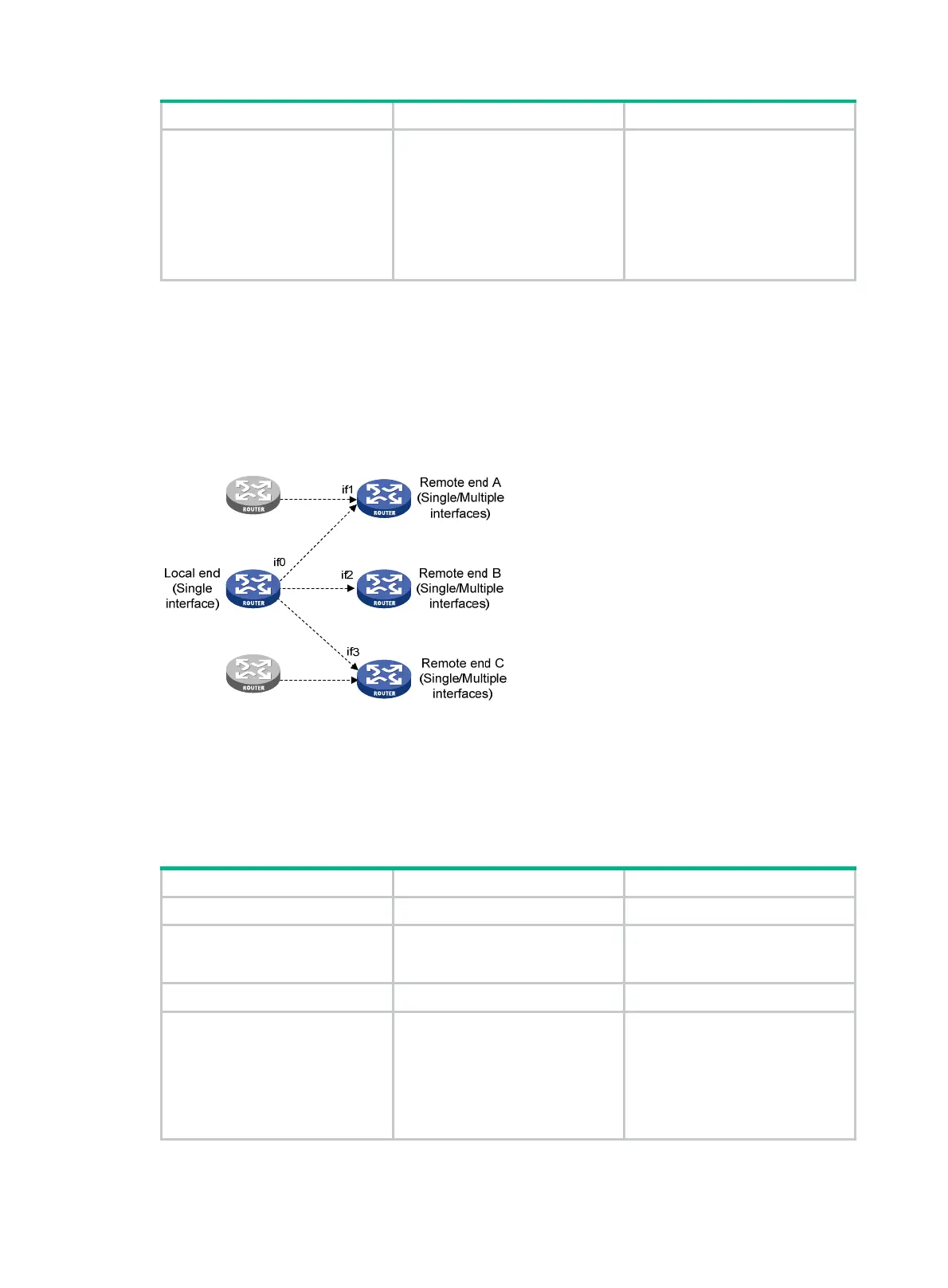131
Step Command Remarks
4. Configure the interface to
receive calls from a remote
end.
dialer route
protocol
next-hop-address [
mask
network-mask-length ] [
user
hostname |
broadcast
] *
Optional.
If the
dialer route ip
next-hop-address
user
hostname
command is configured at the
called end, the called party will
use the specified next hop
address and hostname to
authenticate the calling party.
Configuring an interface to place calls to multiple remote
ends
In Figure 42, an interface at the local end places calls to multiple remote ends (the components in
inverse color represent the routers irrelevant to the networking).
Figure 42 Network diagram
In this scenario, a single local interface if0 places DCC calls to multiple remote interfaces including
if1, if2, and if3. Because multiple remote ends are involved, use the dialer route command to
configure the dialer strings and destination addresses. As only one originating interface is involved,
you can configure DCC parameters for the interface by configuring a dialer circular group. In addition,
you can configure PAP or CHAP authentication.
To configure an interface to place calls to multiple remote ends:
Step Command Remarks
1. Enter system view.
system-view
N/A
2. Enter dialup interface
(physical or dialer interface)
view.
interface
interface-type
interface-number
N/A
3. Enable C-DCC.
dialer enable-circular
By default, C-DCC is disabled.
4. Repeat this step to configure
the dial strings and
destination addresses for the
interface to place calls to
multiple remote ends.
dialer route
protocol
next-hop-address [
mask
network-mask-length ] [
user
hostname |
broadcast
] *
dial-number [
autodial
|
interface
interface-type interface-number ]
*
N/A

